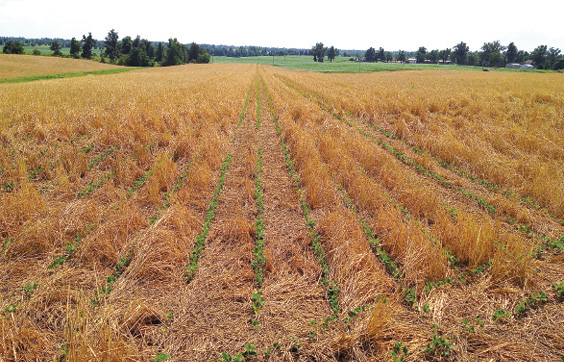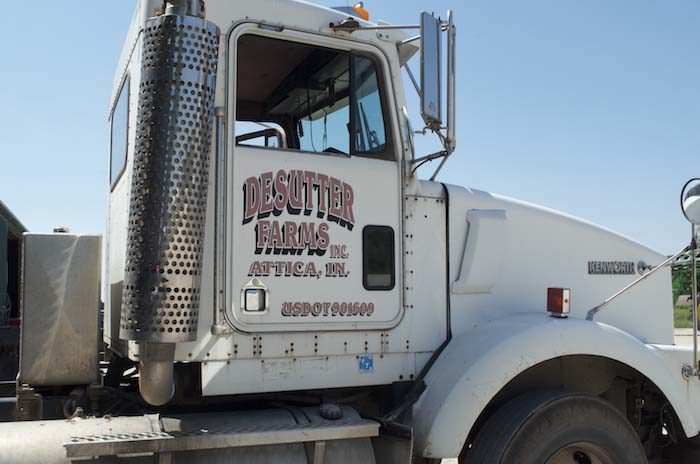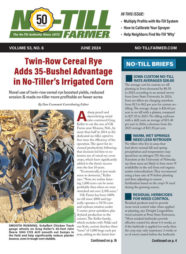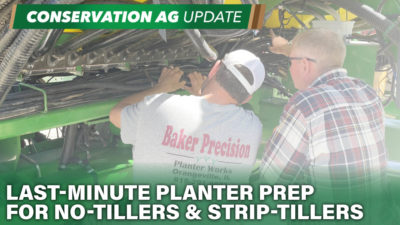Advertise Follow Us
Cover Crops

ARTICLES
Twin-Row Cereal Rye Adds 35-Bushel Advantage in No-Tiller’s Irrigated Corn
Add Covers, Subtract Inputs & Multiply Profits with Systems Approach to No-Till
No-Till Termination Options for Cover Crops & Winter Cereal Forages
[Podcast] Part 2: Respecting & Restoring the Land with No-Till Legend Ray McCormick
IMAGE GALLERIES
Keeping Busy with Cover Crops
Attica, Ind., no-tiller Dan DeSutter is always looking for ways to improve his cover-crop system. We visited him in the spring of 2016 when he was rolling/crimping his cover crops and planting soybeans.
To learn about DeSutter's operation, check out the What I've Learned from No-Tilling article: Rejuvenating Acres and Ramping Up Soil Productivity.
PRODUCTS
No-Till & Cover Crops Handbook
Transitioning from conventional farming to no-till and incorporating the use of cover crops requires a higher level of management, but with No-Till Farmer's new No-Till & Cover Crops Handbook, you now have easy access to the critical information you need on field preparation, equipment requirements, how no-till and covers impact other agronomic practices and more.
ViewCovering Up, Part 5: Building a More Efficient, Diverse Cover Crop System
Covering Up, Part 4: Getting Results with Innovative Cover Crop Systems
Cover Cropping Triple-Play Package
The Secrets of Soil Biology: How to Make it the Engine for a More Profitable No-Till Operation
Covering Up, Part 3: Branching Out With Your Cover Crop Program
Watching Out for Herbicide Carryover in Your Early Seeded Cover Crops - Bryan Young - NNTC 2016 Presentation - MP3 Download
The increased application of herbicides with soil residual activity in corn and soybean production has complicated fall establishment of cover crops. Initially, the concern focused on the emergence and early vigor of cover crop stands, but has more recently been implicated by some individuals as contributing to a decrease in winter survival. As farmers explore methods for seeding cover crops even earlier in the fall or possibly inter-seeded with corn, the issue of herbicide carryover becomes an even more critical issue, says Bryan Young. The Purdue University weed scientist shares how we can make educated estimates of which herbicide and cover-crop combinations may be the most detrimental, but trial and error will prove to be the only reliable method of gaining local experience that directly relates to your farm operation.
ViewMaximizing Your Cover Crop Investment for Better No-Till Health and Profits - Darin Williams - NNTC 2016 Presentation - MP3 Download
Increased water infiltration, less erosion, cleaner water and improved overall health of cash crops are just a few benefits Darin Williams has witnessed since adding cover crops to his 2,000-acre no-till operation in east central Kansas. Williams discusses these benefits and several more, including how cover crops have reduced his weed population and chemical inputs and allowed his non-GMO crops to do just as well as GMOs. He also shares how adding livestock to the operation has maximized his investment in cover crops, as well as his experience in marketing cover crop seed to seed companies.
ViewPlant Green into Cover Crops This Spring - Jim Hershey - NNTC 2016 Presentation - MP3 Download
Jim Hershey challenges you to consider planting before you terminate your high-value cover crop in the spring. The Elizabethtown, Pa., no-tiller and president of the Pennsylvania No-Till Alliance has been practicing the “planting green” system on his corn, soybean, wheat and livestock operation using multispecies cover crops with great success. Hershey shares his experiences with this system and how it’s reduced his slug pressure to nothing. He also talks about the cover crop interseeder that was built on his farm and what he’s seen from it.
ViewIntegrating a Diverse Rotation, Cover Crops and Livestock Into Your No-Till System - Darin Williams - NNTC 2016 Presentation - MP3 Download
Darin Williams wishes he had known about no-till and grazing cover crops when he decided to go into home building after college because he didn’t think he’d make it as a farmer in his community. But since he took up farming in 2010, Williams has been able to grow his no-till operation to 2,000 acres of non-GMO corn, soybeans, wheat, rye, triticale, winter barley and milo, and grazes his cattle herd on cover crops to maximize their investment. Williams also has a flock of sheep and recently added poultry. Considering organic matter to be king on his farm, the Waverly, Kan., no-tiller discusses the components that make up his no-till system, including why he tries to direct-market everything produced to consumers and how he marketed his grain for premiums in 2015.
View



















